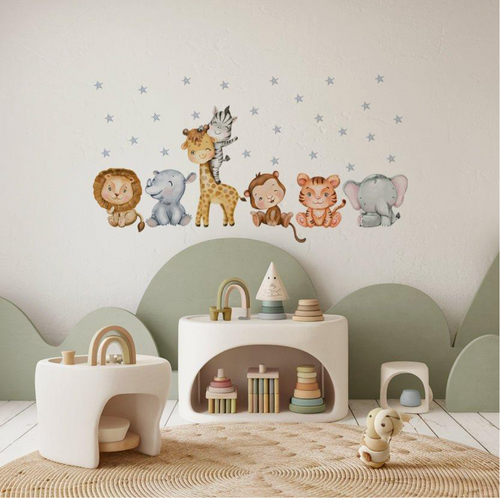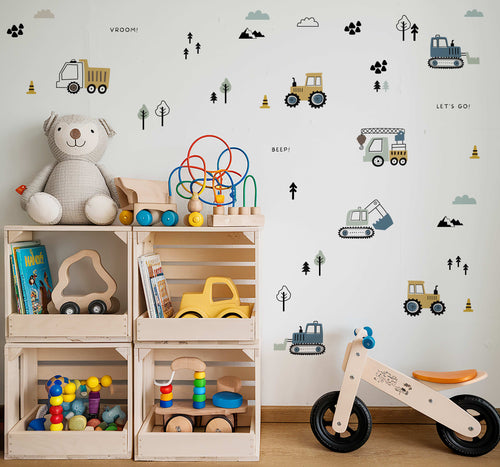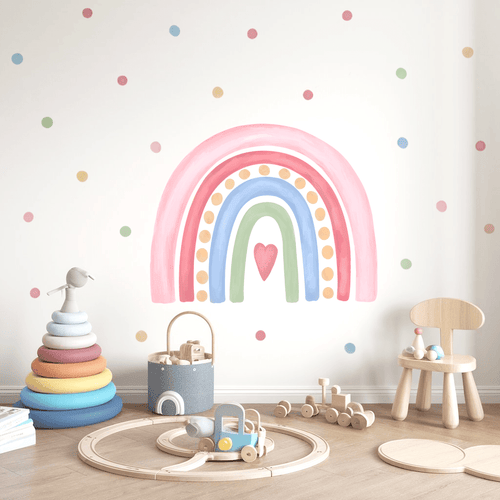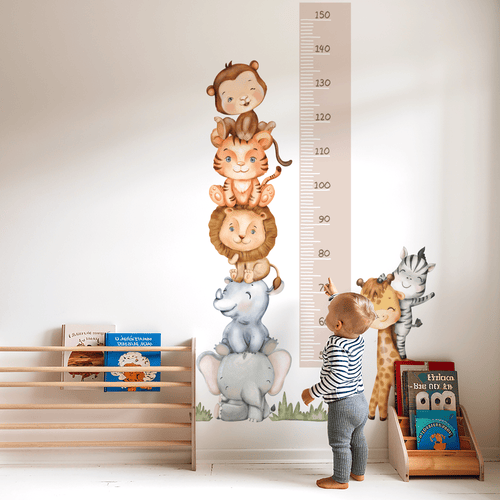The height chart is not just a simple piece of decoration for your child's bedroom wall. It is also a valuable tool in monitoring and tracking your child's growth and development. In this ultimate guide, we will delve into the basics of kids height charts, the different types available, how to read them accurately, factors affecting kids' height, and frequently asked questions about using height charts.
Understanding the Basics of Kids Height Chart
What is a Kids Height Chart?
A kids height chart is a visual representation of a child's growth progress. It typically consists of a vertical ruler-like scale marked in either centimeters or inches. By measuring a child's height regularly and recording it on the height chart, parents and healthcare professionals can gain insights into a child's growth patterns over time.
Height charts come in various designs, ranging from simple wall-mounted charts to interactive digital versions. Some height charts feature colorful illustrations or characters that make the measuring process more engaging for children. These charts often include spaces to write the child's name, age, and the date of measurement, creating a personalized record of their growth journey.

Importance of Tracking Your Child's Growth
Tracking your child's growth is essential for various reasons. Firstly, it helps to identify any potential growth issues or delays at an early stage, allowing for prompt intervention if needed. Secondly, monitoring their growth progress provides reassurance and peace of mind for parents. Additionally, a height chart can serve as a source of motivation and excitement for children as they witness their growth milestones.
Regularly updating the height chart not only helps in monitoring physical growth but also allows for tracking growth spurts and patterns. Parents can observe how their child's growth rate changes over time and compare it to standard growth charts to ensure they are within a healthy range. This information can be valuable during visits to healthcare providers, enabling them to make informed decisions regarding the child's development.

Different Types of Kids Height Charts
Wall-Mounted Height Charts
Wall-mounted height charts are the most common type of height charts. They are typically made of durable materials such as wood or canvas and come in various designs and themes. These charts can be permanently affixed to a wall or door frame, allowing for a long-term record of your child's growth.
Many families choose wall-mounted height charts not only for their functionality but also for the sentimental value they hold. Parents often mark their child's height with a date and a name, creating a visual timeline of their growth journey. These charts can become cherished keepsakes that families look back on with fond memories.
Portable Height Charts
Portable height charts offer flexibility as they can be easily moved from one location to another. These charts often come in the form of a roll-up mat or a foldable design. They are convenient for families who frequently relocate or for those who want to monitor their child's growth while traveling.
Additionally, portable height charts are popular among parents who like to involve their children in the measuring process. The flexibility of these charts allows kids to participate in tracking their own growth, making it a fun and interactive experience. Some portable height charts even come with colorful markers or stickers for children to personalize their growth chart.
Digital Height Charts
With advancing technology, digital height charts have become increasingly popular. These charts utilize electronic sensors to measure a child's height accurately. The height data is then displayed on a digital screen. Some digital height charts even offer additional features such as growth trend analysis and data storage.
Parents who are tech-savvy often appreciate the convenience of digital height charts. These charts provide precise measurements and eliminate the need for manual recording. The ability to track growth trends over time can also be beneficial for monitoring a child's development and identifying any potential concerns early on. Digital height charts offer a modern approach to keeping track of your child's height with ease and accuracy.
How to Read a Kids Height Chart
Interpreting Height Percentiles
A kids height chart often displays percentile lines or curves, indicating how a child's height compares to their peers of the same age and gender. The percentile range helps you understand whether your child's height falls within the average range or if further evaluation is necessary. Remember that being above or below the average percentile does not necessarily indicate a problem, as each child grows at their own pace.
It's important to note that genetics play a significant role in determining a child's height. If both parents are tall, it's likely that the child will also be taller compared to their peers. However, environmental factors such as nutrition and overall health also contribute to a child's growth and development. Consulting with a healthcare provider can provide valuable insights into your child's growth trajectory and ensure they are on the right track.
Understanding Growth Patterns
To accurately interpret a height chart, it is crucial to consider your child's growth pattern over time, rather than focusing solely on individual measurements. Kids experience growth spurts at different stages, and their height may not always progress linearly. By observing the trend of their growth, you can identify if their growth follows a steady progression or if there are any sudden changes that may warrant medical attention.
Keep in mind that factors such as puberty and hormonal changes can significantly impact a child's growth rate. During puberty, children experience rapid growth in height, often referred to as a growth spurt. This period of accelerated growth is normal, but monitoring it through a height chart can help ensure that the growth remains within expected parameters. If you have any concerns about your child's growth pattern, discussing them with a pediatrician can provide reassurance and guidance on appropriate next steps.
Factors Affecting Kids Height
Genetics and Height
Genetics play a significant role in determining a child's height. Height is largely influenced by the genes inherited from their parents. However, genetics alone does not solely determine height; environmental factors and nutrition also play essential roles.
Genes provide the blueprint for a child's growth potential, but environmental factors can either support or hinder this genetic predisposition. Factors such as access to healthcare, exposure to pollutants, and socio-economic status can all impact a child's growth trajectory. It is important to consider the interplay between genetics and environment when assessing a child's height development.
Nutrition's Role in Height
A well-balanced diet rich in essential nutrients is vital for proper growth and development. Adequate intake of nutrients like protein, calcium, vitamin D, and other micronutrients is crucial for achieving optimal height potential. Ensuring your child receives proper nutrition from a young age can positively impact their overall growth and height.
Protein is particularly important for growth as it is a building block for tissues, including bones, muscles, and organs. Calcium and vitamin D are essential for bone health and growth, helping to ensure that bones reach their maximum potential length. Micronutrients like zinc, iron, and vitamin A also play crucial roles in supporting overall growth and height. A deficiency in any of these nutrients can lead to stunted growth and potential height limitations.
Frequently Asked Questions About Kids Height Charts
When Should I Start Using a Height Chart?
It is recommended to start using a height chart as soon as your child is born. Even though their height at birth may seem insignificant, monitoring their growth right from the beginning will establish a comprehensive record of their growth trajectory.
Height charts come in various designs, from colorful and whimsical to minimalist and sleek, allowing you to choose one that complements your child's personality and the decor of their room. Some height charts even come with additional features like movable markers or stickers to make tracking your child's height a fun and interactive experience.
How Often Should I Measure My Child's Height?
It is advisable to measure your child's height every 6 to 12 months, depending on their age and growth pattern. Regularly tracking their height ensures timely detection of any growth abnormalities and allows you to celebrate their growth milestones.
When measuring your child's height, ensure they are standing straight against the height chart, with their heels, back, and head touching the wall for accurate measurements. Avoid measuring right after they wake up or before bedtime, as height can fluctuate throughout the day due to factors like posture and gravity.
By understanding the basics of kids height charts, reading them accurately, considering the factors affecting height, and knowing when and how often to measure, you can harness the power of height charts to monitor your child's growth effectively. Remember, a height chart is not just a decorative element; it is an invaluable tool in helping you ensure your child's healthy growth and development.





















